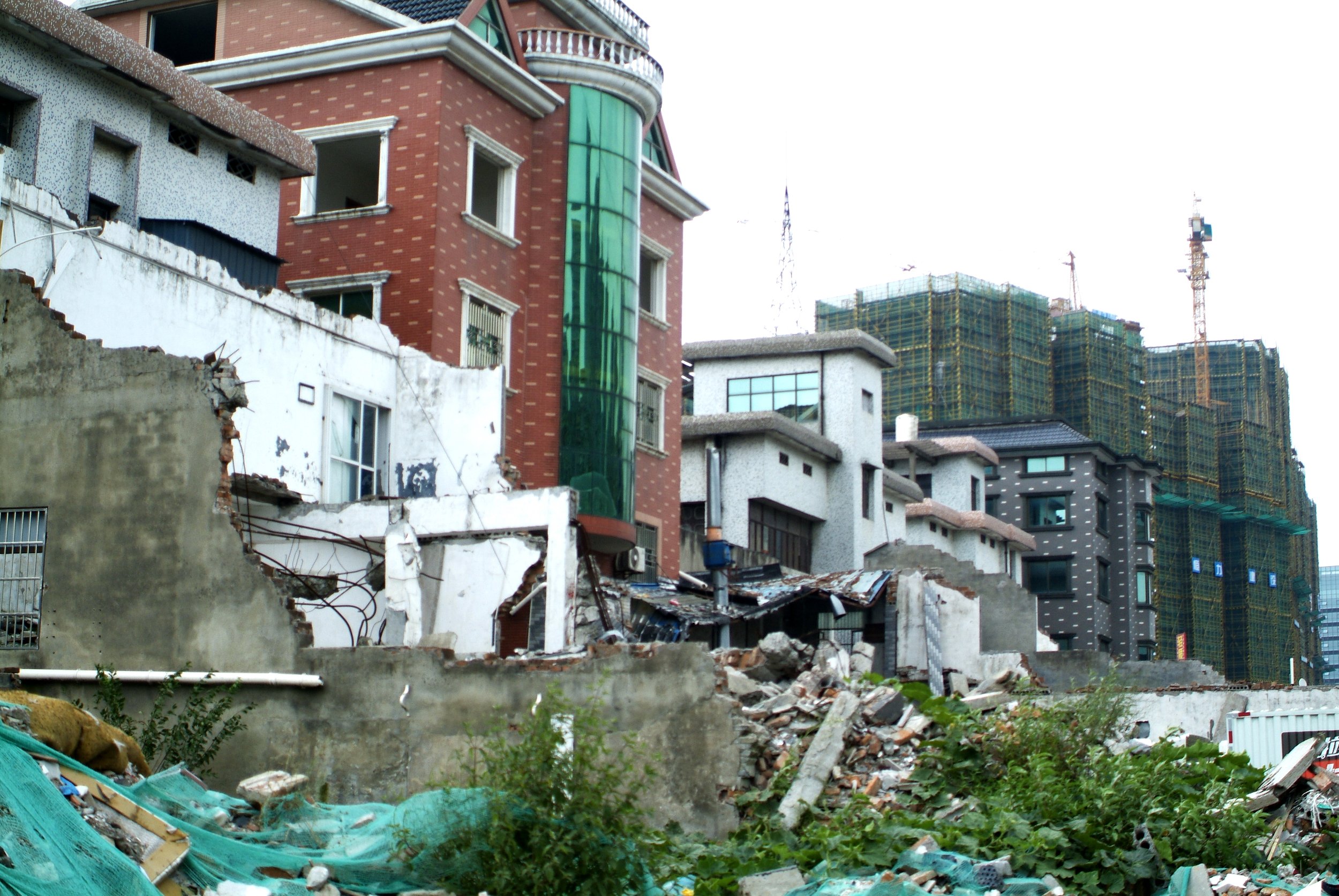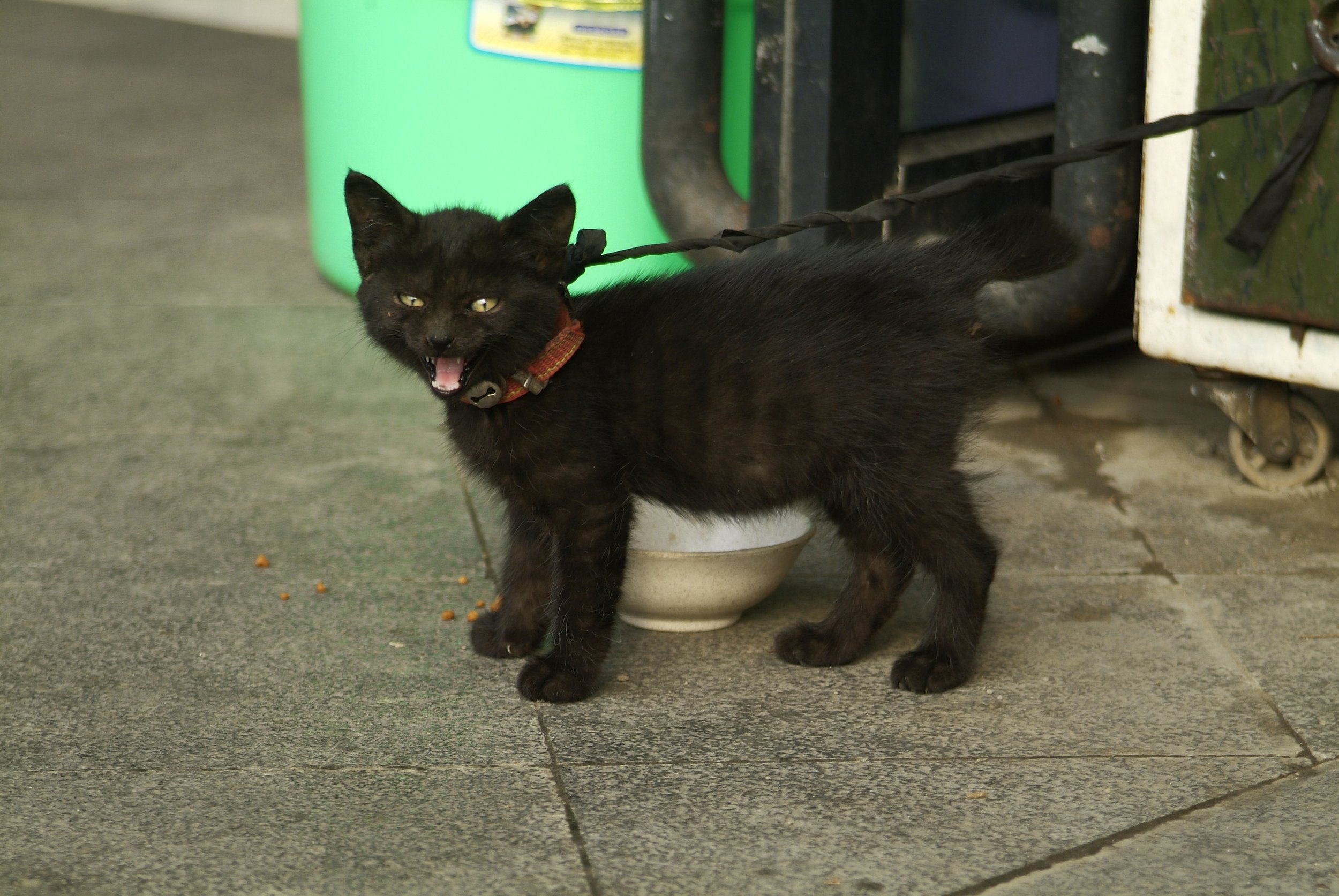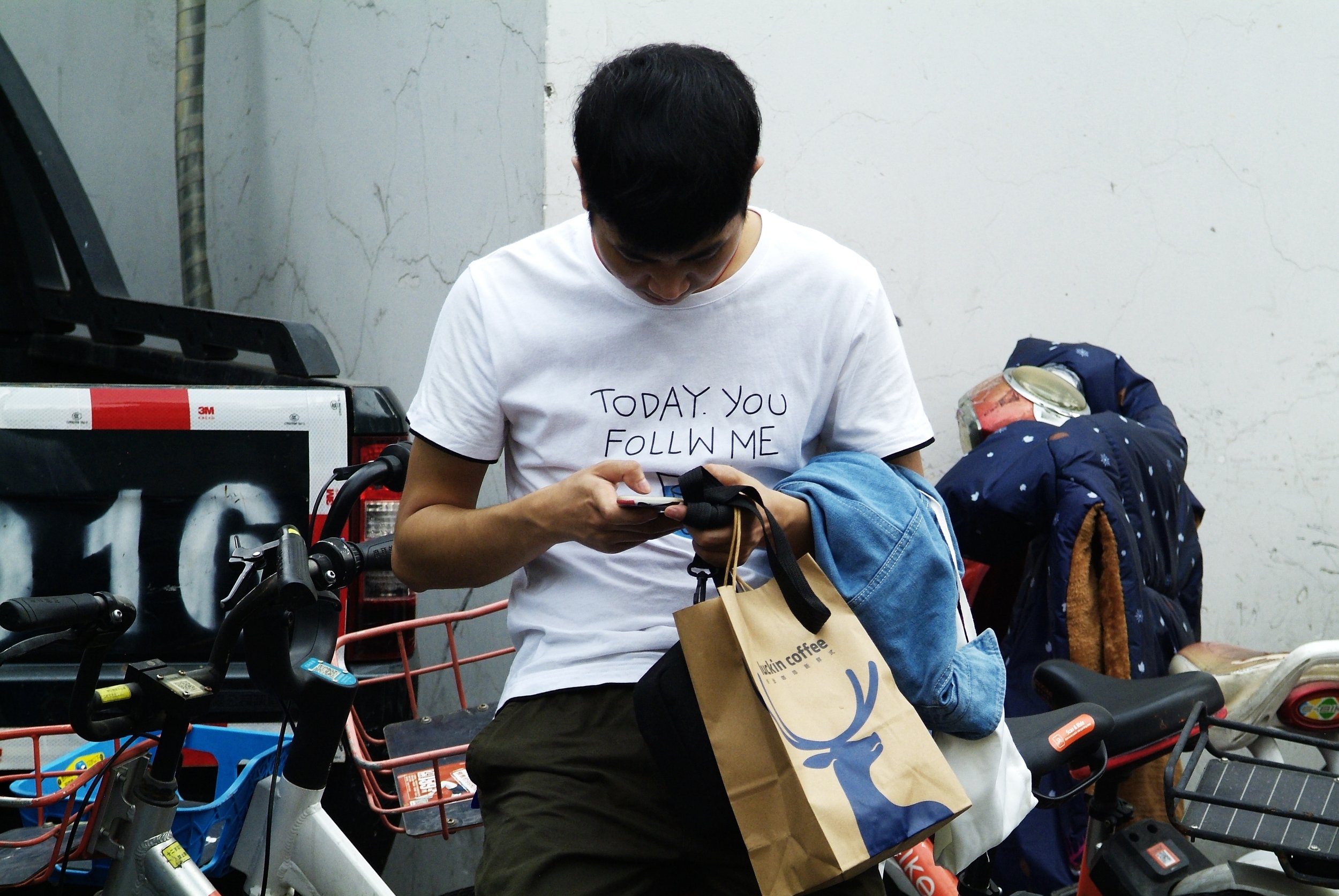
> TRAVEL FILES <
THE SIGN HUNTERS
@thesignhunters • #thesignhunters • #handfulsadventures • #apiginchina
CHINA: Best of Hangzhou 2019
Written by Laszlo, 28 January 2020
Happy (belated) 2020 everyone! And, at the same time, Happy Chinese (or Lunar) New Year, too! Even though I have been planning to pull together this post since the early days we moved to Hangzhou (杭州), I have had many difficulties that made me not to do so. The one and foremost is that it had taken us almost two months to find the sign. Hangzhou is a really large settlement, it was difficult to locate where the actual sign was. Eventually, we succeeded, but by then, we had been approaching the end of the year rapidly. I must admit, it is not the official boundary sign, but when it comes to 'official' settlement signs to large settlements, the Chinese do not seem to bother installing them. It means, there is not really one here in Hangzhou (or anywhere else we have been so far).
The good thing about this post happening now and also the legacy of finding a Hangzhou sign quite late, however, is that by the end of 2019, we had seen a lot of sites through exploring this mega city; thus we had ended up with hundreds of photos that has eventually made it possible for me to select my favourite (or not so favourite) shots of Hangzhou. In fact, these are not only my favourite photos but also my favourite memories! The best of 2019, which focuses on the roughly four months from the day we arrived to China on the 27th August up to the 31st December. Only a short period of time, but we tried our best to squeeze as much in it as possible.
Compared to the previous ones, this blog though is different this time. Instead of giving you a lot of photos with as little information as possible, this time, I also include a little information on the subject, a little something that the photo or a group of photos shares with you. Hopefully, this will help you learn more about Hangzhou as researching them also helped me gain a deeper knowledge and understanding of this place where we currently live.
And now, let us get the journey started!
It is a journey across the space of Hangzhou and maybe across time too, but this journey is not in timely order. It is more or less structured in a random way, but as you will see, there is still some organised mess here. As you know it by now, every 'The Sign Hunters' blog post begins with a photo of the sign, the official settlement sign of the place that the post is dealing with. So, here we are! There are even two photos here, because I like both of them. The size (colossal!) of this sign nicely represents the scales of Hangzhou, too. Both the sign and the city are massive!
This one here below can also be considered a welcome sign. It is actually a tapestry that is hung over the pedestrian passage at Hangzhou Airport. This photo was taken on the day of our arrival. On the first day, in fact, in the very first hour. This was the first contact with the city and, in a way, we found a welcome sign straight away. We did not feel too welcomed after my luggage had been lost somewhere on the way and we could not pay for anything using our Visa, MasterCard or AMEX cards at all. We felt quite rough to be honest, but hey! The welcome sign was still a welcome sign. It is not an official sign though, that is why it remains in the background. Although, what does official mean? Let us keep this one here, it is beautiful and unique and is worth putting into our collection.
And here are a few photos of flags and banners that tell you that you are in China. Our journey here began with a bonus as we arrived when the country was just turning 70 years old. You do not actually see many banners or posters of the leaders of China, but the celebrations wrapped the country and the city streets and walls in national colours, including some images of Xi Jinping (习近平), the general secretary of the Communist Party of China, the president of the People's Republic of China, and the chairman of the Central Military Commission.
Hangzhou is a sub-provincial city and comprises of ten urban districts. Due to the controversial data available online, I am not entirely sure how big it is and how many people live around here, but the scales are hard to imagine. You get onto the bus, travel westerly and after 3 hours of driving, probably around 150 km away from the core areas, you are still in Hangzhou! Let us put it simple: it is a large area, a large number of people (up to possibly 20 million)! Still, Hangzhou has developed rapidly over only the last few decades and this is the time when most parts of the current city have also been incorporated into this large urban conglomerate. There are six central urban districts and four suburban districts. In the early 1990s, the urban districts of Hangzhou only comprised Shangcheng, Xiacheng, Gongshu, and Jianggan. These four can still be considered as the amalgamated core areas of the megacity where a visitor can find most tourist sights, from old residential streets to hi-tech CBDs. It is also the area along River Qiantang where one of the most famous modern city skylines can be found and seen, with many hotels, bank headquarters, conference centres and other business or government-related shiny buildings.
This spherical-shape building below is the International Conference Centre, one of the landmarks of Hangzhou. If you are looking for information on what to see in Hangzhou, a photo of this building will certainly be among the finds. There is a massive public space around it with many trees, rivers, lakes, fountains and statues.
In 2008, Beijing organised the 29th Summer Olympic Games. Around the same time, stadiums across other cities were also constructed; in Hangzhou, too. This one looks like a lotus flower and it is one of the city's landmark buildings.
The construction across Hangzhou is super large-scale. There are many newly developed sites and buildings. The development flows in many directions, addressing both residential and business needs. Crazy to think how many flats can be crammed into one housing block like this though! Even my photos cannot give you the right impression of the scales. These housing blocks below are averagely 25-storey-buildings. You can ask, of course: who will live in these buildings? Good questions as a large number of newly built skyscrapers seem to be sparsely populated.
These two photos below of the same building, which is the New Century Grand Hotel at People's Square (人民广场). It is a true landmark of the Xiaoshan (萧山) area. Its golden roof can be seen from afar. Oh, and if it is XIaoshan; we actually live in this district. Not so long ago, this was an independent settlement, but today, it is part of Hangzhou. Still, it has a sign, a massive, beautiful sign and we were happy to find it. In fact, we found the Xiaoshan sign at another location too.
New developments sadly affect the old buildings and streets however. And when it comes to demolishing old stuff, the Chinese are really not sentimental. They just get it done. Weird to think that some of these residential dwellings could still serve well the people, but they are pulled down and the new soulless blocks are awaiting to be risen on the debris of the past.
Luckily, there are still older residential blocks available throughout the central districts of Hangzhou. Some of these prison-like buildings look very scary with their cage-like windows. The environment they were installed within though is lovely.
This building below is actually a tiny shopping mall here in Xiaoshan, including a decent supermarket. It is, in fact, our nearest and only supermarket! It serves us well and the area where we live. It took us weeks to find it, because we did not know where exactly it was. When we found it, we were very surprised just how close it was to us. The main reason that we could not find it had a strong connection with how much we struggled with the internet in our early days. Although, we are still struggling with it, but not in the same way as we struggled at the beginning. It took us almost two months to get the phone situation sorted and could finally use Amap, the Chinese equivalent to Google Maps.
Withing the redeveloped areas, there is plenty of room for modern artworks and sculptures. I do like these spherical objects that are situated next to the Nanyuan metro stop in the Yuhang district (余杭区). We found them when we were sign hunting in the area. We came to this place with the hope of finding the Hangzhou boundary sign as the city's eastern boundary is literally right here, but we did not find anything. Nanyuan (南苑) itself is nice with plenty of new, shiny buildings, and a decent supermarket. And these mirrored sculptures, of course!
Hangzhou's districts are made up of small and big villages and towns. These small-scale settlements used to live independently on their own (like Xiaoshan). There used to be gaps between these settlements, but nowadays, they fill up these gaps by developing brand new cities with the aim to meet new purposes. E-Fashion Town (芑尚小镇) is part of Linping New City (I call it the Yuhang CBD). It is not even fully constructed yet, hence the massive construction sites that one can observe all across the area. E-Fashion Town, however has very quickly become a prominent part of Hangzhou's Yuhang district, and a dominant part of China's clothing industry. It also attracts young people to settle in these 'fashionable' towns. It is a nice part of Hangzhou to be honest!
There is not really graffiti painted on the walls in Hangzhou. I have seen literally one that said something random. But, the great thing is that Chinese artists are allowed to use their talent and craft artworks on things, mostly on electric boxes. They say random things like 'I would like to eat spinach!' though, but legal, normally commissioned by the government, and done in a way that nicely fits in the environment. I like these ones.
And then there are these pretty gaps between construction sites where beautiful flowers grow, both plant and human flowers can be seen!
On the day when we found E-fashion Town, we were actually on the hunt for new settlement signs. We walked a lot despite the temperature was really high - Katie got totally annoyed. But hey! We were out exploring with a bigger aim. This was to find Hangzhou's own Eiffel tower, because, guess what!? Hangzhou has its own Eiffel tower! China has its own replicas of famous buildings of the world. And we did it! It is a third of the size than the original in Paris, but nonetheless, it is a beautiful copy of the French national symbol.
Despite the growing number of motor vehicles, the Chinese still get about by using push bikes and mopeds. The public transportation, however, is really developed and highly reliable. Many people use them as car ownership is limited and it is difficult to get a license.
On that day when we were looking for the massive Hangzhou sign, we walked from Pengbu to the location of the sign. It was shorter then an hour long trip in one direction. On the way back to Pengbu, we accidentally found something that looked like a park with a lake. This small area was clamped in among large (and new) residential buildings. It was hard spot it as it was dug into the ground; though its top was not covered. This is the so-called Pengbu Old Street (彭埠老街), which is not exactly a fake street; it is more like a museum street, a replica of a public space that not so long ago stood here and described the face and characteristics of the Pengbu area. It was exciting for me to acknowledge that this area had its own welcome sign!
Our journey finally arrives to Baoshishan (Baoshi Hill, 宝石山), which is a hill covered with forest and is a beauty spot of Hangzhou by the northern shores of West Lake. There are several paths going up to the top of it, from where one can observe the so-called core city, the oldest part of this massive settlement, and of course, West Lake itself. It is a highly popular destination among both locals and tourists. On the top of the hill, another landmark of Hangzhou can be found: that is the seven-storey tall Baochu Pagoda (保俶塔). The pagoda was originally constructed in 963 and stood nine storeys tall. The one seen nowadays is the most recent reconstruction that was built in 1933.
The most famous landmark of Hangzhou, without any doubt, is West Lake (西湖). It has been a UNESCO World Heritage Site since 2011. West Lake has been among the most important sources of inspiration for Chinese garden designers reflecting "an idealised fusion between humans and nature". The lake and its shores form an important socialising spot for the locals.
No matter what city on Earth we are talking about, the night lights can change the way a place looks and feels. Here are some photos with the common theme that they are all located near West Lake or the Grand Canal (more about this one soon).
Down below is Leifeng Pagoda (雷峰塔), a prominent landmark of Hangzhou. This pagoda is five-storeys tall with eight sides, built in 975 and situated on Sunset Hill south of West Lake. Dating back to North Song Dynasty, the King of Wuyue Kingdom ordered to build the pagoda in order to celebrate the birth of a son by his favourite concubine. The pagoda collapsed in 1924 but was reconstructed in 2002 and became a popular travel destination after then.
And this one below is Chenghuang or, most commonly known as City God pavilion and temple. It is situated on Wushan (Wu Hill), which is a prominent part of Hangzhou.
The origin of the Chenghuang Pavilion (城隍閣) is quite culturally famous. Cheng and Huang respectively mean the city wall and the channel of outside of city. (If you are interested, you can find more information in English here.) Next to the Chenghuang Pavilion, there is the memorial temple of Zhou Xin, also known as the City God. He was a Judicial Commissioner of Zhejiang between 1403 and 1424 and for all the good he did for the people of Hangzhou, he is worshipped here.
The beautiful bridge here is called Yingyue (映月桥).We found it right next to a boundary marker which we were not sure what it marked exactly. One thing is, however, sure, this bridge is right next to famous Grand Canal. Known to the Chinese as the Jing–Hang Grand Canal, it is a UNESCO World Heritage Site. It is the longest as well as the oldest canal or artificial (man made) river in the world. Starting at Beijing, it passes through Tianjin and the provinces of Hebei, Shandong, Jiangsu and Zhejiang to the city of Hangzhou, linking the Yellow River and Yangtze River. The oldest parts of the canal date back to the 5th century BC. The total length of the Grand Canal is 1,776 km (1,104 mi).
And at last but not least, we are going to end this journey here at Hangzhou's old town, which is also known as Southern Song Imperial town or, more precisely, the Hangzhou Historical and Cultural Districts which encompasses Wushan Square, Southern Song Imperial Street and Hefang Street with land area of more than 20,000 square metres. It is the most famous street scene of Hangzhou and it is the only well-preserved old street block in the entire city. Here you see a lot of locals and visitors from all over China and abroad. If you visit Hangzhou, this is, by no doubt, the most recommended spot for you to visit.
Our journey ends here. I hope you enjoyed going through these photos and little information.




















































































































